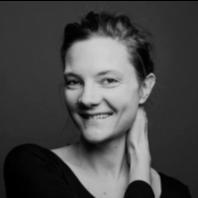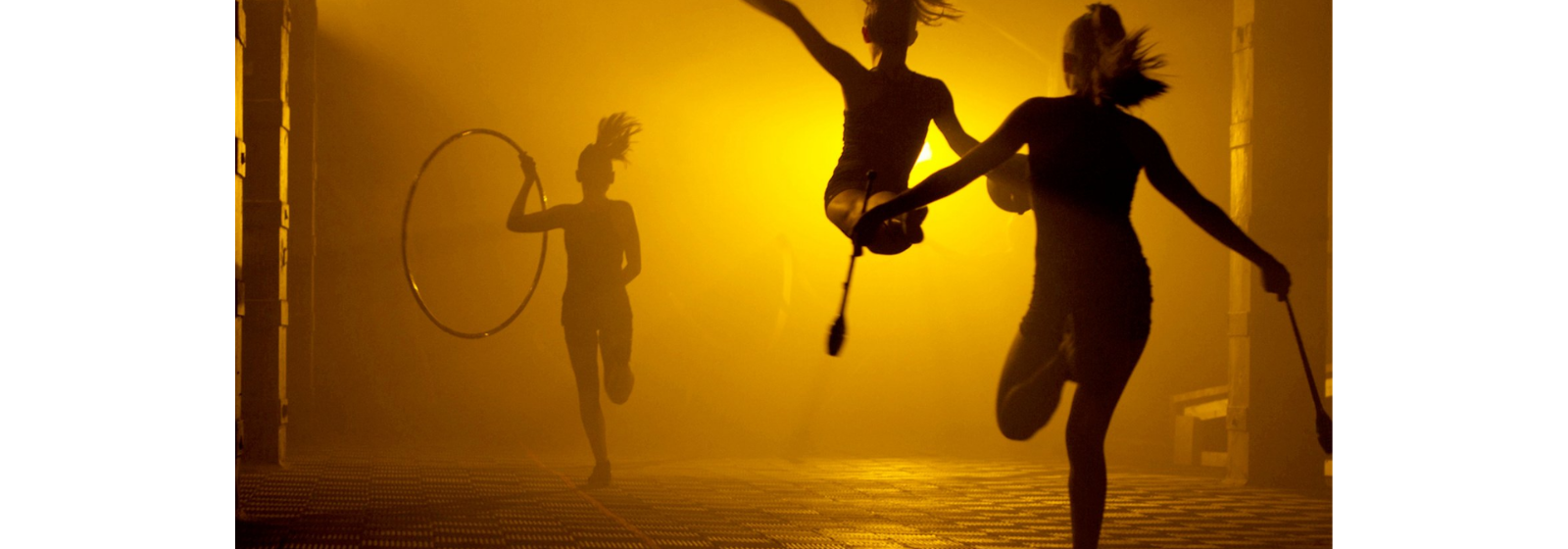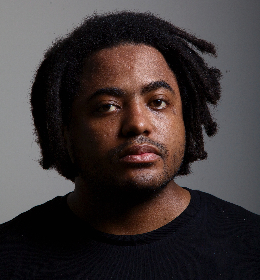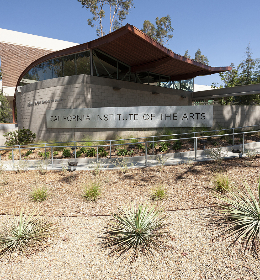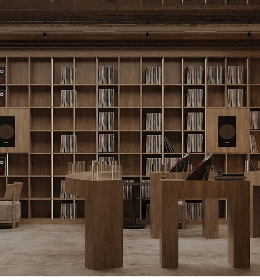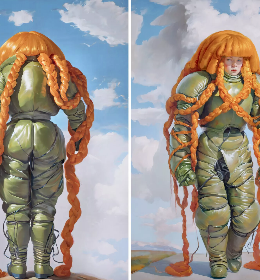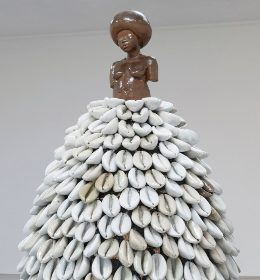From November 5 to November 7, 114 galleries, around sixty fewer than usual, were gathered in Turin, Italy. The main part hosted 89 international galleries from Europe but also from Dakar (Oh Gallery), Moscow (Triangle) and Tehran (Inja). Despite there being three times fewer visitors compared to previous years due to travel restrictions still ongoing for certain countries, the fair was able to distinguish itself with an unparalleled guideline when it comes to contemporary art.
A group of Indian galleries (Nature Morte, Akar Prakar, Shrine Empire) were bundled up within the Hub India entity inside the fair and in three outdoor locations in the city (Palazzo Madama, Museo d'Arte Orientale and the Academia Albertina Di Belle Arti). A selection of artists was imagined by Myna Mukherjee and Davide Quadrio. We can also mention Benitha Perciyal, Ravinder Reddy, Khadim Ali, LN Tallur and more.
Intesa Sanpaolo, Artissima's main sponsor, was presenting "Vitality of time. The art collection of Intesa Sanpaolo" at the fair, under the commissioning of Luca Massimo Barbero. An ensemble of emblematic pieces from his collection among which can be found works by Lucio Fontana, Alberto Burri, Jannis Kounellis, Carol Rama… The bank's latest acquisition, a 1984 Gerhard Richter abstract painting titled Abstraktes Bild, was also on display. Michele Coppola, the Bank's executive director for Art, Culture and Historical Goods, with whom we could speak, is thrilled for projects, both current and upcoming. In April, the Gallerie d’Italia's fourth exhibition area will open in Turin, located on the Piazza San Carlo. After Milan, Naples and Vicence where Intesa Sanpaolo's collections are already located, Turin will perfect their ambitious project. The future museum, dedicated to photography and digital art, will have a 10.000 m² space split among five floors. Across the whole of Italy, Intesa Sanpaolo has over 30.000 works from periods ranging from Antiquity to contemporary art.

Diego Gualandris, Solo Presentation, Courtesy of ADA Rome | Photo By Mattia Mognetti
Some pleasant findings
Artissima has always given a choice spot to new talents, and one must note that (good) surprises were not lacking this year. First and foremost, on the ADA gallery (Rome) stand, our eyes were drawn to the strength and maturity of the work by a young artist, Diego Gualandris (born in 1993). He was presenting a series of paintings (Quando Capuccetto Rosso usci Dalla pancia del lupo) inspired by what the artist imagined went on after Little Red Riding Hood was eaten by the wolf. Imagining a possible follow up story to the Perrault tale allowed Gualandris to create scenes with rich compositions that call upon a formal and plastic repertoire (painted with oil) that invites the spectator to a universe of mythical beings, legends, even science-fiction. ADA had given him a solo exhibition in 2020 where the public was able to discover Fiabette, his book of artists and tales, presented at the Fondazione Baruchello in Rome. A universe that attracts collectors, as the several works sold within the fair's first hours can attest to.

Diego Gualandris, Quando Capuccetto Rosso uscì dalla pancia del lupo IV, 2021 - oil on canvas, 120 x 105 x 3,5 cm, Courtesy of ADA Rome | Photo by Mattia Mognetti
The Öktem Aykut gallery from Istanbul has dedicated its booth to an artistic duo composed of Koray Ariş (born in 1944 in Turkey) and Francesco Albano (born in 1977 in Italy). Both sculptors have shared a workshop in Istanbul starting in 2010. But while Ariş has enjoyed significant recognition in his native country, Albano remains to be discovered in Italy. Ariş was taught sculpture in Istanbul by Şadi Çalık, one of the masters of modern Turkish sculpture and later went to Rome to learn with Emilio Greco. A sculptor of mineral and anthropomorphic shapes, leather and calfskin are his preferred media but he also works with wood. Alongside the installed works by Francesco Albano, the booth succeeded in making an ambitious presentation of both artists that questions the fair's visitor's idea of volume and space by using reclaimed materials on one side and organic materials on the other.
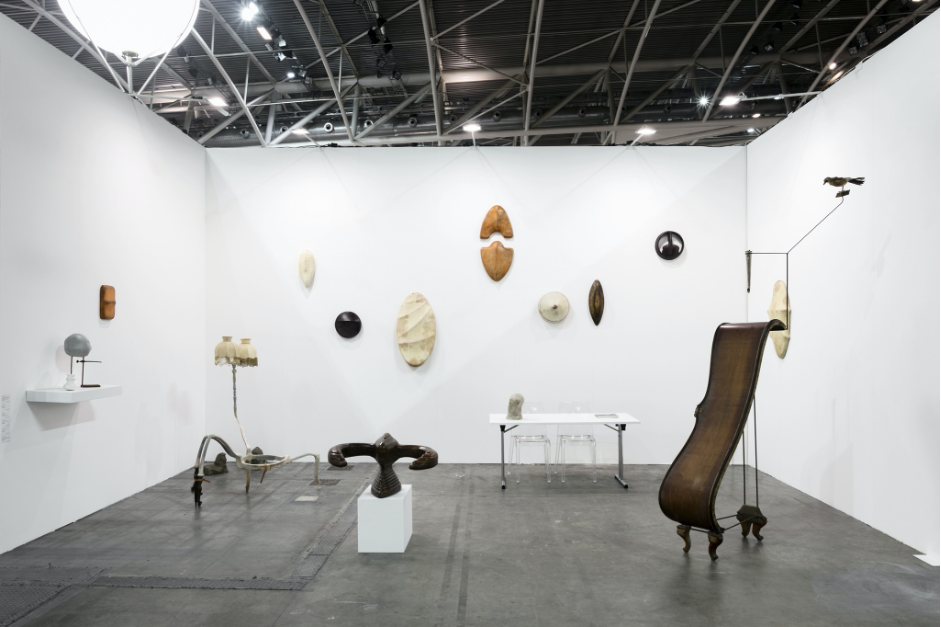
Istanbul's Öktem Aykut gallery booth. Dialogue between Francesco Albano and Koray Ariş. Öktem Aykut @Artissima 2021. Photo by Renato Ghiazza.
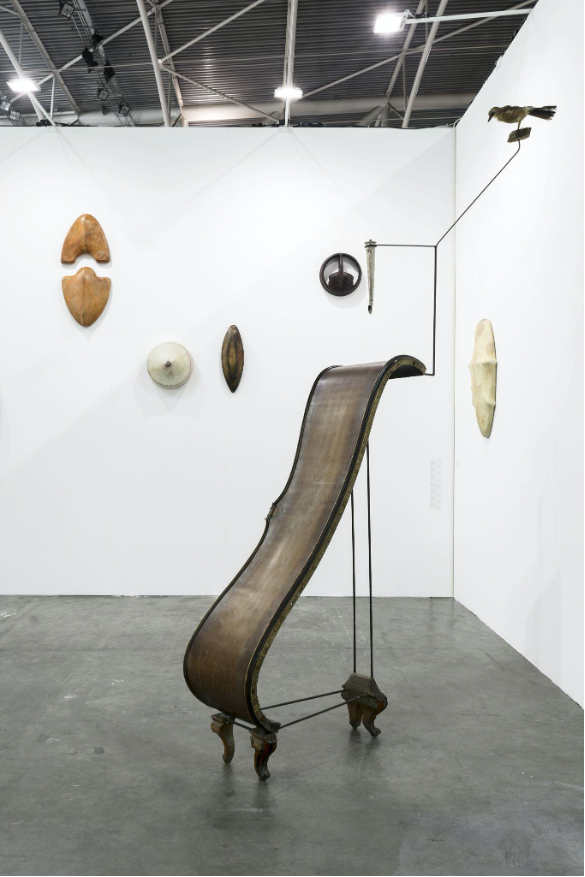
Öktem Aykut @Artissima 2021. Photo by Renato Ghiazza.
Another Istanbul gallery (also based in Berlin) Zilberman, was presenting on its booth five artists, among which were Zeynep Kayan (his series Temporary Sameness) and Heba Y. Amin who was, with Dominique White, the co-recipient of the first edition of the "ad ochi chiusi…" prize, given by the Merz Foundation in collaboration with Artissima.
On the booth of Romanian gallery Jecza (Timișoara), we discovered the work of Ioana Stanca (born in 1987) who was trained at the beaux-arts in Rome and at the National University of Arts of Bucharest. Stanca works with techniques that differ from the ones traditionally used in fine arts. She works with textile, reclaimed or recycled materials with which she creates works filled with feminine, sexual and reification symbolics. Like her Self-portrait with 34 eyes, her human scale self-portrait in the shape of upside down scissors on which can be found 34 wide open eyes. A sharp, fearsome object, the scissors under which the artist depicts herself is set in the middle of a bunch of art works embroidered with titles that evoke the loss of virginity (the series of Lost Paradises and Strange Flowers where the defenseless naked woman is threatened by a needle that would penetrate her or by a thread that could strangle her) and even rape (the serie Prophet, a kneeling woman with messy hair cut by a pair of scissors). A feeling exacerbated by the artist's frames: needles held together by their eyes or a cobweb from which one cannot escape.

Ioana Stanca, Strange flowers (True blue), embroidery on linen, 48x35 cm, artist frame, wood,80x70cm aprox. Copyright The Artist. Courtesy Jecza Gallery.
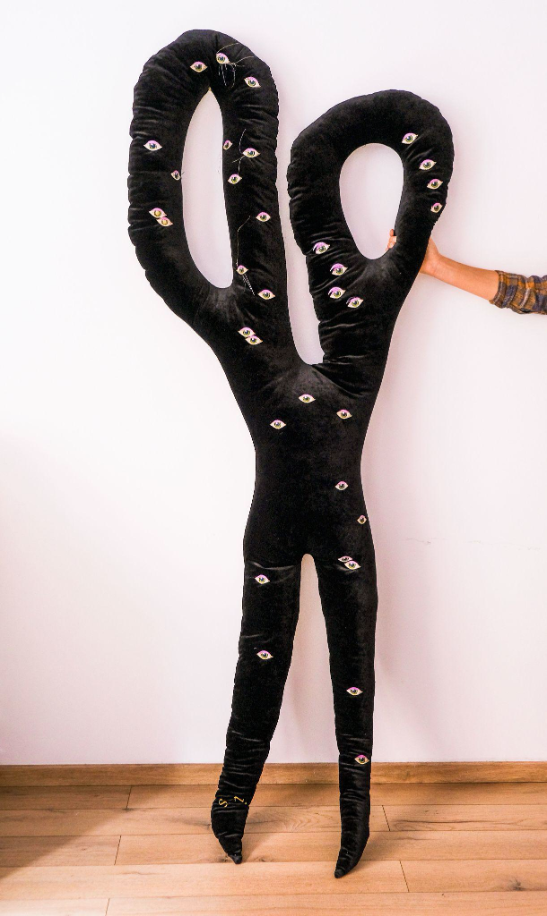
Ioana Stanca, Self Portrait with 34 eyes, soft sculpture- embroidery on velvet, silicone fiber, 200x150 cm aprox, 2021. Copyright The Artist. Courtesy Jecza Gallery.
Marinella Senatore at Mazzoleni
Founded in 1986 in Turin, and with a London branch opened in 2014, Mazzoleni is offering her first personal exhibition to Marinella Senatore (born in 1977) who they have been representing in Europe since March 2021. The exhibition gives the opportunity to take in the artist's rich career, she has already worked in over 23 countries and has gathered over 6 million people around her artistic projects. Installations, performances, paintings, drawings, videos, luminous sculptures… many mediums used by the artist to put forth the interaction between men and women, the way the body expresses itself, moves and interacts in space and in relation to others. Having as title "Make it Shine" the exhibition truly embodies the artist's will to convey the light and to share sensory experiences. We can find injunctions (for the struggle, for the respect of rights) in her works (a series of drawings, It's time to go back to the street, 2019; textile banners Protest Forms Memory and Celebration, 2019-2021; collages…).

Marinella Senatore, It's time to go back to the street, 2019,Graphite and charcoal on acid-free paper, 21x29,7cm, Courtesy The Artist, Mazzoleni, London - Torino
In tune with today's fights (women's and minorities' rights, fight against inequalities and racism), Marinella Senatore invites her visitors to really question themselves on the message literally written on her works, a message that can first seem hidden by a first impression of joy and ease because of the bright colours, golden or coloured that go through the canvas or the media. That way, her banners make us think about those used during religious processions or during civil demonstrations. In 2012, the choral work Rosas, an opera in three acts with 20.000 participants, launched a year later the School of Narrative Dances (SOUND) that aims at self direction and inclusion through the multidisciplinarity of projects. Senatore conveys through her work a positive message to push communities to unite, to "make it shine".
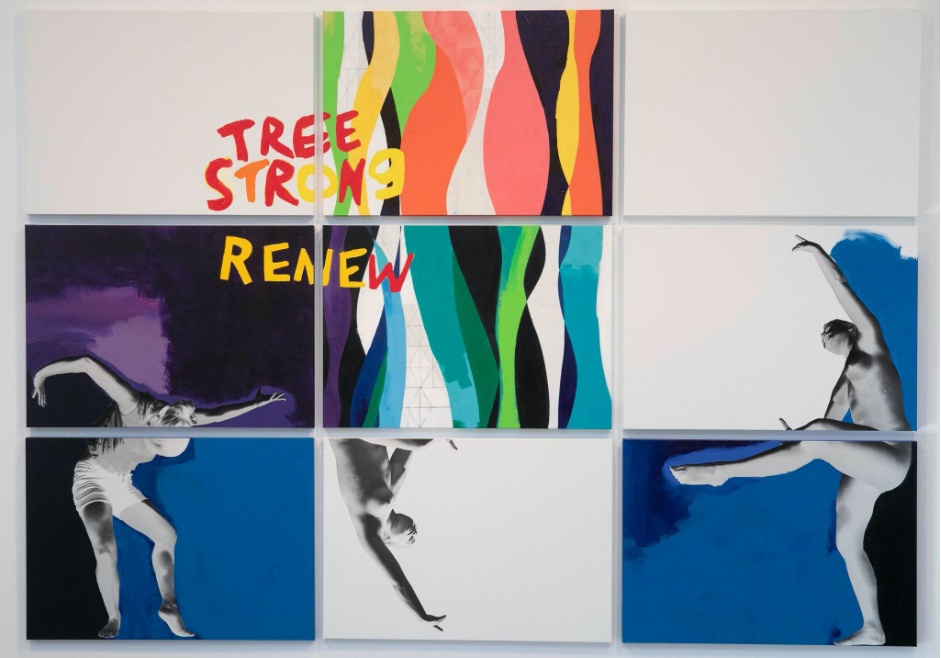
Marinella Senatore, Un Corpo Unico, 2020, 9 pieces. Courtesy The Artist, Mazzoleni, London-Torino.
Marinella Senatore: Make it Shine
Until 29 january 2022. Mazzoleni.
MASSIMODECARLO at the Villa Chiuminatto
For the duration of the fair, the MASSIMODECARLO gallery (Milan, London, Hong Kong) has invested the Villa Chiuminatto, the beautiful liberty style villa, that is now property of the Buono Lopera family and the siege of the newcleo start-up company. For the gallery, this exhibition in such a prestigious location in Turin is a great move. Restored with great refinement, the villa Chiuminatto is the perfect place to host the works of Urs Fischer, Carster Höller, Rob Pruitt, Elmgreen & Dragset, Richard Prince, Maurizio Cattelan and others.
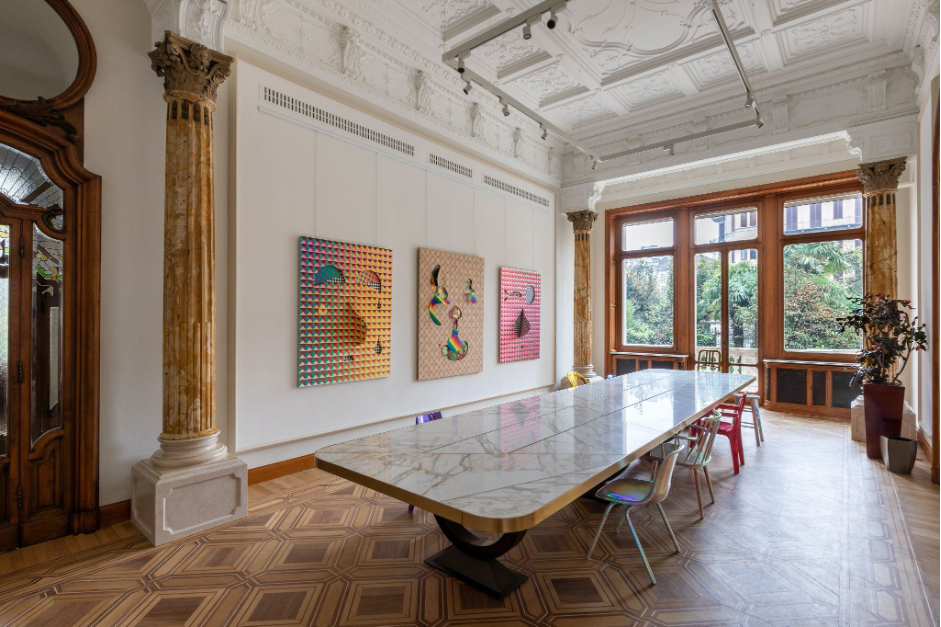
Photo by Roberto Marossi. Courtesy MASSIMODECARLO

Photo by Roberto Marossi. Courtesy MASSIMODECARLO
There was not a lack of side events in Turin during the Artissima. The Castillo Di Rivoli offered no less than three personal exhibitions dedicated to the artists Agnieszka Kurant, Bracha L. Ettinger, Otobong Nkanga and Anne Imhof. We can also note a fascinating and rich exhibition centered around the Italian art critic Achille Bonito Oliva, known by the initials A.B.O.
The Italian commissioner Caterina Grimaldi invited the public to discover the work of Maurice Pefura (born in 1967) with the exhibition "Points de Tension" that was taking place at the Palazzo Scaglia Di Verrua. Maurice Pefura offered a reflection on the mass housing areas around Paris. In an all-over on large paper, the artist recreated the buildings, a multitude of outside-facing open windows that question our outlook on them. This grid-like organisation dehumanises society, we cannot see anything, the eye gets blurred, only finding stability when getting close.
Cover image: Marinella Senatore, Rosas #12, 2012, Fine Art Print on Epson Hot Press Paper, 80x105cm, Courtesy The Artist, Mazzoleni, London - Torino.



